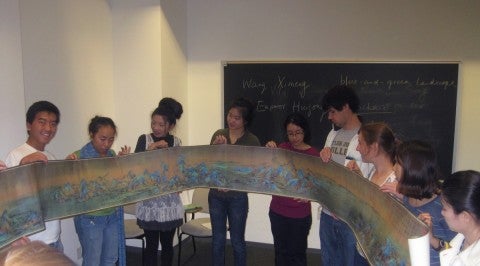PhD Candidate Adrienne Rooney co-organized "The Inaugural Caribbean Festival of Arts as Prism: 20th Century Festivals in the Multilingual Caribbean," a three-day virtual symposium to think through the first Caribbean Festival of Arts (Carifesta)—from its precursors and possibilities to its achievements, missteps, and significance. On August 5-7, 2022, she and her symposium co-organizers Dr. Ramaesh J. Bhagirat-Rivera and Dr. Vibert C. Cambridge will gather with artists, intellectuals, organizers, and policy makers from the Caribbean and its diaspora, the wider Americas, and Europe to have conversations about this seminal moment, fifty years later, and its legacies.
The gathering also marks the launch of digital, partly crowd-sourced archive dedicated to Carifesta ’72 and other Guyanese and Caribbean festivals at the Caribbean Research Library of the University of Guyana. More details about how to get involved in the symposium or archive; the program; the stellar community of speakers and production partners; keynote address; and a registration link can be found at carifestaat50.com.
Adrienne Rooney is a Ph.D. Candidate in Art History at Rice University. She studies twentieth-century art and (visual) culture in the Americas, with a focus on the Circum-Caribbean. Her dissertation—for the time being titled "Against Cultural Dependency: Aesthetics and Economics in the Caribbean Festival of Arts (Carifesta), 1966-1981" and to be completed in Spring 2023—is the first book-length academic study of Carifesta, an initiative that has embodied Caribbean integration more fully than political or economic efforts. Her dissertation attends to the conceptualization of the monumental, multilingual, ongoing festival and the (visual) culture foregrounded in its first four iterations in Guyana, Jamaica, Cuba, and Barbados. With the support of extensive archival research and contemporaneous theories by, among others, Kamau Brathwaite, George Lamming, and Sylvia Wynter, it weaves a story of the festival—a meeting place for artists from Brazil to Curaçao, from Saint Lucia to Suriname, from Venezuela to Haiti—in the heady, long 1970s.
Ph.D. candidate, Adrienne Rooney, co-organizes virtual Carifesta symposium and launch of the Digital Archive of Guyanese and Caribbean Festivals
"The Inaugural Caribbean Festival of Arts as Prism: 20th Century Festivals in the Multilingual Caribbean" | August 5-7, 2022


